
15 Best Things to Do in Death Valley National Park
Last Updated on February 17, 2022 by Polly Dimitrova
As a land of extremes, Death Valley National Park is often avoided and neglected. Just as with many other nature seekers, Death Valley was not high on our bucket list and it was a surprise to us when we spontaneously decided to travel to the “hottest, driest and lowest” national park a few weeks ago. After exploring the park for two days, we realized we were wrong. Beneath the desolate and uninhabited scene, the park hides continuously-changing landmarks which stand truly spectacular in their unconventional beauty! Keep reading as we explore the 15 best things to do in Death Valley National Park!
Death Valley’s Must-See Locations
Covering a total of 3 million acres, Death Valley National Park welcomes its visitors with an abundance of places waiting to be explored, sights to be admired and adventures to be experienced. If you are trying to plan your trip, keep reading as I am sharing Death Valley’s must-see locations below!
Badwater Basin
Widely known as the lowest point in North America, Badwater Basin is one of the must-see locations in Death Valley! Located at 282 feet/85.5 meters below sea level, visitors find a unique vast field of salt flats as far as the eye can see.
The parking area is located right next to a boardwalk, which leads towards the basin of what was once upon a time Lake Manly. It was thousands of years ago when the lake evaporated, however, the accumulated salts and sediments remained intact. Nowadays, as the water rises to the ground surfaces, so do the concentrated salts and slowly over time they form unique polygon shapes.
Exploring Badwater Basin can take 5 minutes or an hour – it is up to you to decide how much time you can spare. As you continue following the main trail, the symbolic hexagonal shapes become bigger and even more distinctive. You will be tempted to keep taking closer looks at the unique salt formations on the ground, but the scenery in front of you is equally deserving of attention. The salt field is nestled between the snow-capped mountain peaks soaring over the skyline. After exploring the Mosaic Canyon and Golden Canyon Trails, this part of Death Valley National Park took us by surprise with its unusual and unconventional, yet truly remarkable landscape.
Devil’s Golf Course
Situated along Badwater Basin Road and only a 10-minute drive away from the Salt Flats, Devil’s Golf Course is a quick and easy pit stop to add to your Death Valley National Park itinerary.
The main features of Devil’s Golf Course are salt deposits resembling crystal formations. The landscape might look similar to the Badwater Basin’s one at first, however, taking a closer look reveals a different type of terrain. After being exposed to thousands of years of wind and rain erosion, the clusters of salt have become so incredibly sharp and edgy to the point that the area became known as a golf course only suited for the devils!
Compared to the hexagonal shapes at Badwater Basin, the jagged salt formations at Devil’s Golf Course are not so fragile and delicate. On the contrarily, they are actually considered quite dangerous due to their cutting-edge texture. This means, that you could freely go for a walk (with caution) and explore the cracked “golf course” with all sorts of unique salt clusters.
Be prepared for another bumpy, gravel road to Devil’s Golf Course. Once you reach the parking area, you are practically right next to the salt deposits. The parking serves as a good viewing spot if you do not want to risk getting hurt on the edgy salt formations.
Mesquite Sand Dunes
Just next to Stovepipe Walls Campground you will find one of Death Valley’s must-see locations – Mesquite Sand Dunes. Death Valley National Park is home to five different sand dune systems, but it is the easy access and convenient location, that makes Mesquite Sand Dunes the most popular in the park.
With its 140 feet, the Star Dune is the highest and considered the highlight of the Mesquite Sand Dunes. If you are determined to conquer it, you will need to plan a round trip of about 1.5 – 2 hours, as it is situated approximately a mile away from the parking area. It is so notable that you will immediately spot it in the distance ahead!
We walked for about 0.5 miles into the vast field of sand and reached the top of a charming little dune overlooking the incredible Star Dune and the surrounding equally magnificent sand dunes. We were quite content as we sat down and soaked in the tranquility and quietness of the desert landscape. Impressive mountain peaks were peeking behind the smooth and wavy dunes serving as the ideal backdrop to a picture-perfect scenery.
It is up to you to decide how much time you would like to spend here. The later in the day you visit, the more unbearable the temperature is. That is why the dawn and dusk hours of the day are perfect for paying a visit to the Mesquite Sand Dunes!
Zabriskie Point
It would be a shame to visit Death Valley National Park and not to catch either the sunrise or the sunset from one of the park’s must-see locations. Just a short drive away from Furnace Creek Visitor Center, you will find one of the most iconic and photographed spots in the park – Zabriskie Point.
You will find a full parking area along Highway 190. A paved quarter of a mile trail takes you to a large overlook. A remarkable field of colorful rolling badlands lies beneath your feet! On the horizon, the snow-capped summits of Panamint Mountains soar into the sky. Nestled between the two, you can catch glimpses of the white salt flats.
Keep in mind that Zabriskie Point gets crowded even during the off-season. We immediately noticed the narrow steep footpath to the right of the parking lot and headed this way instead. After a short, but steady climb, we found a much more secluded and quiet spot to enjoy the sunset from. Not only is the view equally spectacular, but you will also be treated to a lot more tranquil and peaceful sunset experience!
Death Valley Hikes
Dry waterfalls, desolated canyons and unique rock formations are among Death Valley’s features worth exploring. Embarking on a hiking adventure and fully immersing yourself into the scenery is the best way to experience the beauty of Death Valley National Park. Keep reading for the four best Death Valley Hikes!
Mosaic Canyon Trail
Distance: 3.7 miles / 6.06 km
Elevation Gain: 1,200 feet (355 m)
Duration: 2.5 hours
Difficulty: Moderate
Unique rock formations resembling chimneys from ancient waterfalls create numerous “dead ends” and obstacles along the Mosaic Canyon Trail. You will have a blast as you are trying to navigate your way around the collection of massive boulders blocking the path! If you are not up for this challenge or do not have two hours to spare, you could always visit the first portion of the trail, widely known as the most beautiful and scenic. Smooth marble rocks will be tempting you to hop from one side to the other on the narrow canyon.
If you have the time and energy, make sure to continue to the end, where you will find a remarkable 25 feet tall dry waterfall. On the way back down, we ventured to the side along a narrow footpath and got to soak in one of the most breathtaking sceneries in the park. As one of the most fun and exciting trails in the park, Mosaic Canyon is one of the best things to do in Death Valley National Park!
or
Golden Canyon Trail
Distance: 3 miles round trip
Duration: 1.5 hours round trip
Difficulty: Easy
Elevation Gain: 500 feet
A labyrinth of slender canyon slots and wavy golden badlands is awaiting to be explored along one of the best Death Valley Hikes – Golden Canyon. There is a wide list of trails to choose from, such as Gower Gulch Loop, Badlands Loop and Golden Canyon to Red Cathedral. We were determined to catch a glimpse of the impressive red-rock formations resembling a cathedral structure, hence the reason why we opted for the Golden Canyon Trail to Red Cathedral. Canyon walls in yellow, golden, brown and red shades navigated the trail the entire way.
Once we reached the end of the trail a jaw-dropping scenery of a golden badlands field opened before our eyes. Led by our adventure spirits, we found a narrow off-the-beaten-path along the ridge for the way back down for an even more tremendous experience.
Natural Bridge
Distance: 2 miles round trip
Duration: 1 hour
Difficulty: Easy
Elevation Gain: 180 feet
As one of the easiest hikes, Natural Bridge is among the most popular things to do in Death Valley National Park. A short wide gravel trail slowly leads you into the canyon, until the beautiful natural arch comes into sight. This is not the end of the path, so keep going! Shortly after, you will reach what we thought was the actual highlight of the Natural Bridge hike. A massive dry waterfall in a rock cove is peeking behind the high canyon walls to the right. Looking back onto the trail, stunning scenery opens up before your eyes with beautiful snow-capped mountain summits in the distance.
Note: The drive to Natural Bridge, similar to other ones in Death Valley National Park, takes you along a rough, unpaved road. The park suggests it is accessible by sedans, but we lost our license plate along the drive. We are forever grateful to the fellow travellers driving behind us, who stopped to pick it up!
Darwin Falls
Distance: 2 miles round trip
Difficulty: Easy to Moderate
Duration: 1 – 2 hours round trip
Elevation Gain: 200 feet
Dry washed river bends and desolated canyon walls might be dominating the landscape in Death Valley National Park. A slightly longer drive to the not so popular western side of the park, however, indicates a chance for a change of scenery. Nestled in between the dry inhabited desert terrain, a small hidden oasis slowly but steadily burbles, creating a beautiful 25-feet tool cascade.
It was not the size or majesty of the waterfall, but its existence in a land of extremes, which made both Darwin Falls and the hiking trail there so special and extraordinary. Darwin Falls was the highlight of our 2-Day Travel Itinerary to Death Valley National Park!
Note: The road to Darwin Falls is bumpy and rocky. The park suggests only high clearance vehicles to take the drive. After losing our license plate on one of the other similar gravel roads, we had a word with the park rangers before heading there. Strongly recommend checking with them if you have any concerns! Darwin Falls is also slightly further away than the other popular things to do in Death Valley National Park. It might not always be easy to visit on a 2-day itinerary, but this little hidden-gem deserves your attention!
Things to Do in Death Valley National Park
Make sure to add these must-does for the ultimate Death Valley Itinerary.
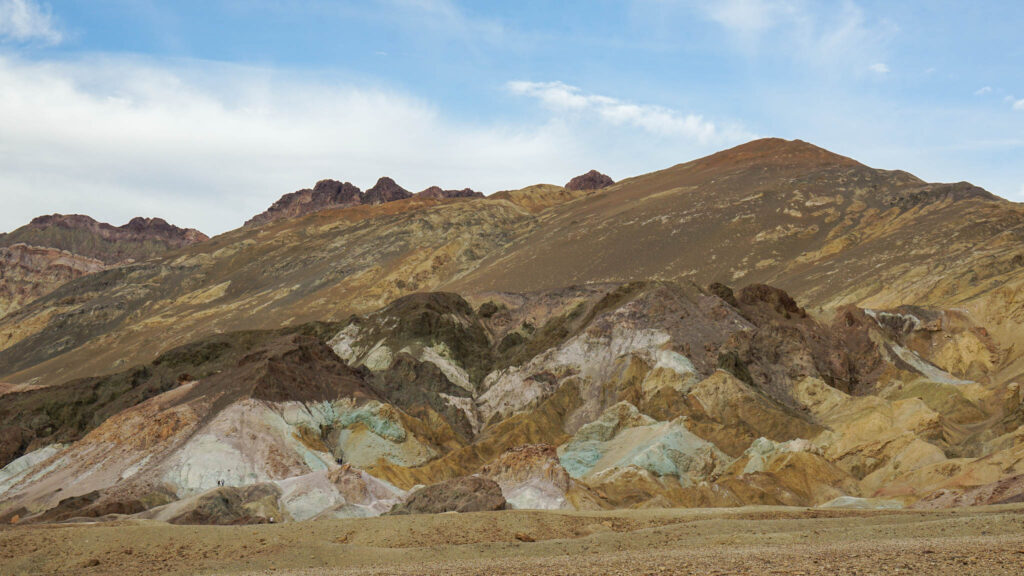
Take the Artist Drive
Regardless if you have just a day or a full week of exploring Death Valley, you definitely need to take the Artist Drive. You can find this one-way, 9-mile scenic loop as you are driving South to North along Badwater Road.
As the road winds through the canyons, you will find numerous pit stops and two main overlook areas, which deserve further exploring. A pullover on the right side of the road indicates your first stopover. A large main paved trail leads straight to a small hill. Instead, we followed a smaller very steep dirt path to the right. The trail requires a much more significant climb, but it rewards you with a spectacular panoramic vista of the colorful rock formations in the distance ahead. With barely any other people besides us, the experience was a lot more peaceful and undisturbed by the crowds.
Even if you miss the first stop, the one area that you definitely want to visit is the Artist Palette. Situated approximately halfway along the drive, this collection of colorful rock formations will blow your mind. Splashes of yellow, red, green, orange and pink colors are speckled across the hills to create a rainbow effect also known as the Artist Palette.
We could not wait to follow the narrow canyon slots and take a closer look at this incredible sight. We spent at least 30 minutes scrambling and climbing over the colorful hills, following the small passages and just admiring the scenery.
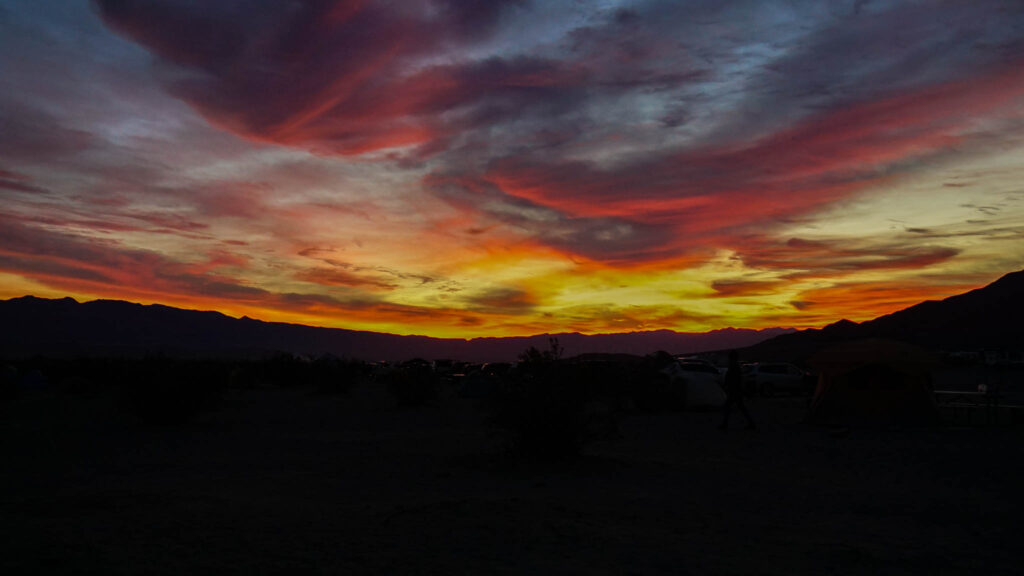
Go Camping
For those of you who are planning at least one overnight stay in Death Valley, I strongly recommend considering camping. The national park has a number of lodging options, but they are fairly limited and fill up quickly. Camping is a fantastic choice, especially for adventure seekers.
As a spontaneous last-minute trip, we had no other option than camping anyway. We literally had four days to get ready – get a tent, sleeping bags and some food to last us for two days. As our first time camping, it was such a success that we almost immediately discussed planning another camping adventure soon.
Camping in Death Valley was a real treat. Without any signal or Internet, we finally had the chance to escape daily life. We were able to fully take a break and recharge our bodies and minds. We disconnected from the world, but we connected with nature. We escaped the hustle and bustle of the city, but we found peace and quiet! Camping is a must-do when in Death Valley National Park!
The sights we wished we could have visited
While 2 days are enough to cover the 10 best things to do in Death Valley National Park, having slightly longer is a good idea if you want to fully dive into the uniqueness and tranquility of the park. Below I have mentioned the sights we wished we could have visited but for one reason or another, we were not able to. Hopefully, this will serve as inspiration to you, if you are planning a longer trip across Death Valley.
- Dante’s View – we just did not have time for Dante’s View, but it is another overlook perfect for soaking in the sunset and sunrise colors
- Ubehebe Crater – If we had an additional day we would have definitely visited Ubehebe Crater. Situated on the Northern Side of the park, it is a bit far if you are only visiting for 2 days like us.
- Racetrack Playa – as one of the most mysterious places in California, Racetrack Playa is a must-visit. Unfortunately, the road is very rough and remote and only accessible by 4×4 high clearance vehicles.
- Eureka Dunes – a lot less popular, Eureka Dunes are definitely worth adding to your itinerary if you have four of five days to explore Death Valley
- Telescope Peak – at 11,049 feet/3,368 meters above sea level, Telescope Peak is the highest summit in Death Valley. You will have to plan for a difficult 7 hours and 14 miles round trip. Once again a high clearance vehicle is needed, plus the peak actually gets snow during the winter months, so you need to have full winter hiking gear to climb it!
Let me know in the comments below. Have you been to Death Valley? Which do you think are the Best Things to Do in Death Valley National Park?
If you have not been to Death Valley National Park before, what are you waiting for?! If you are lucky enough, Death Valley might just be one flight away!
You May Also Like
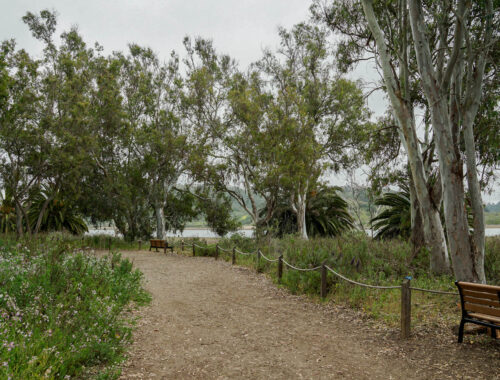
52 in 52, Episode 15: Batiquitos Lagoon Trail
April 15, 2022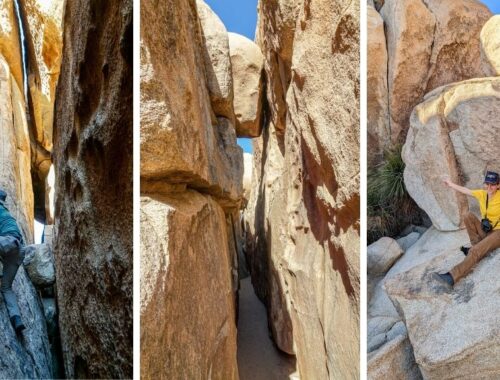
52 in 52, Episode 10: Hall of Horrors in Joshua Tree National Park
March 11, 2022

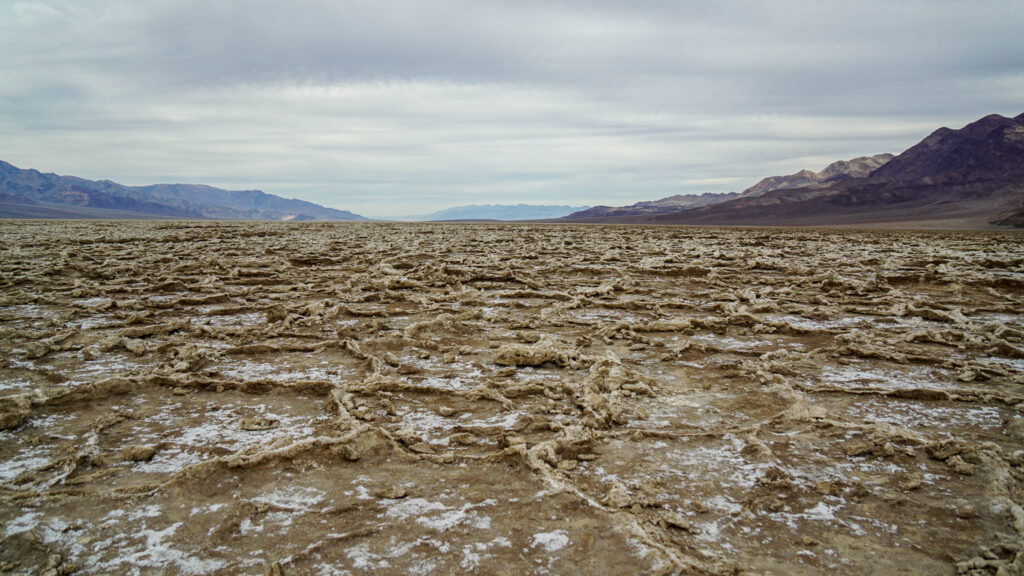
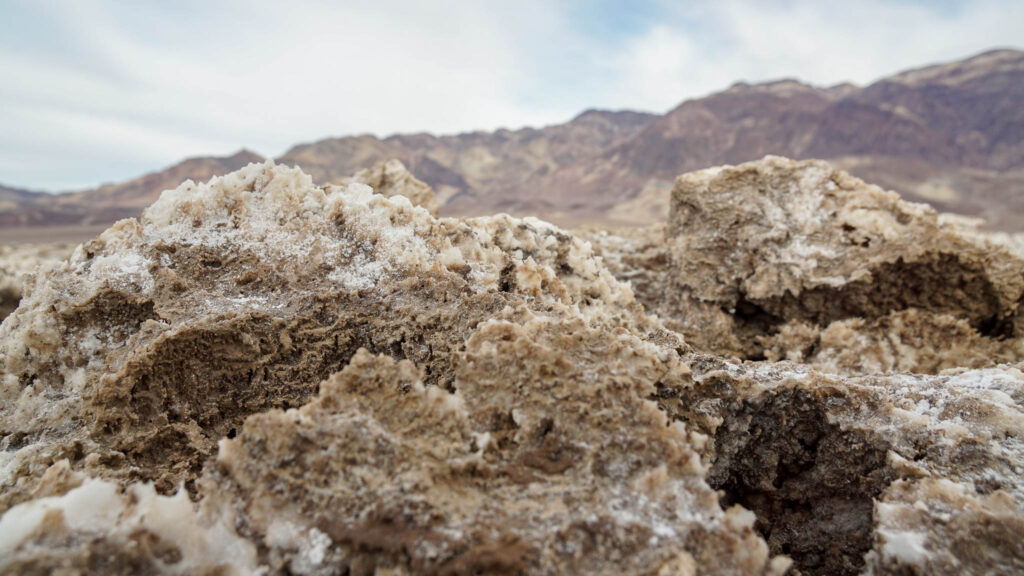
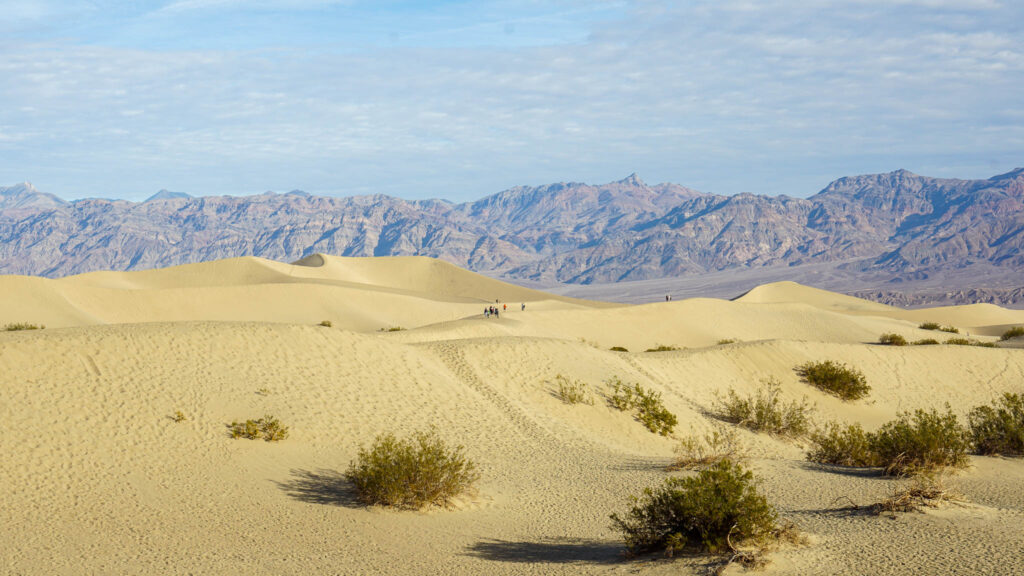
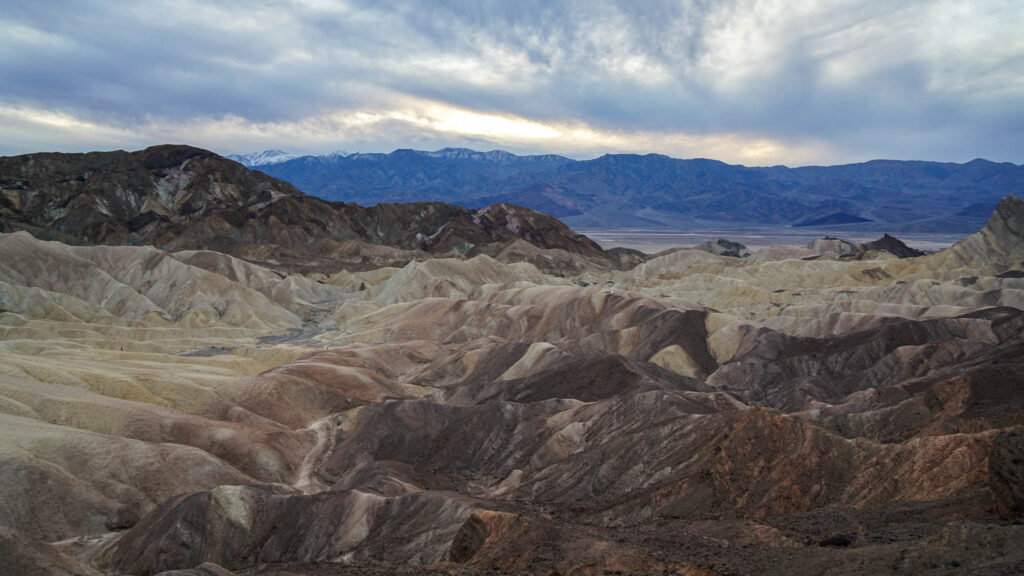
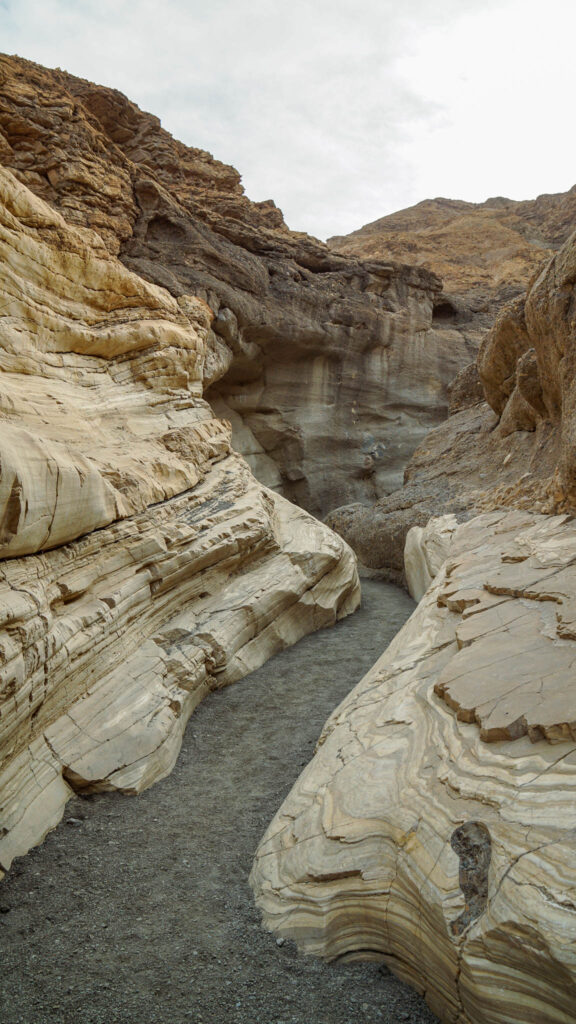
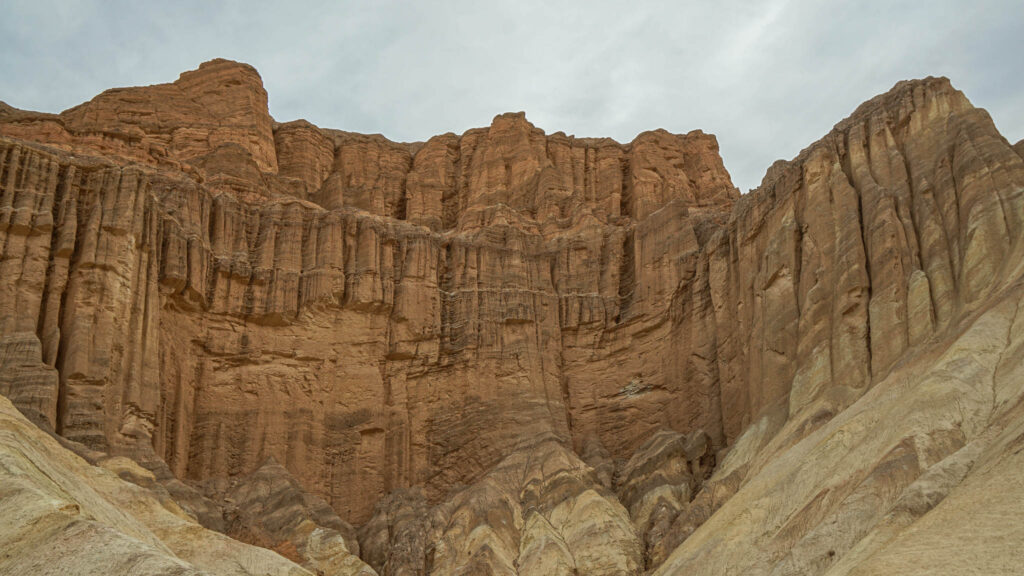
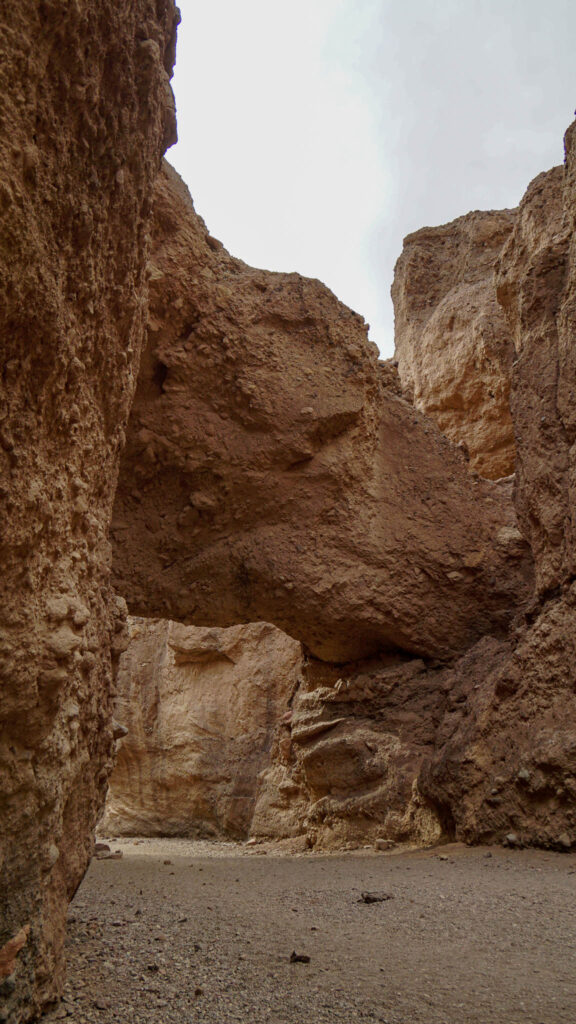
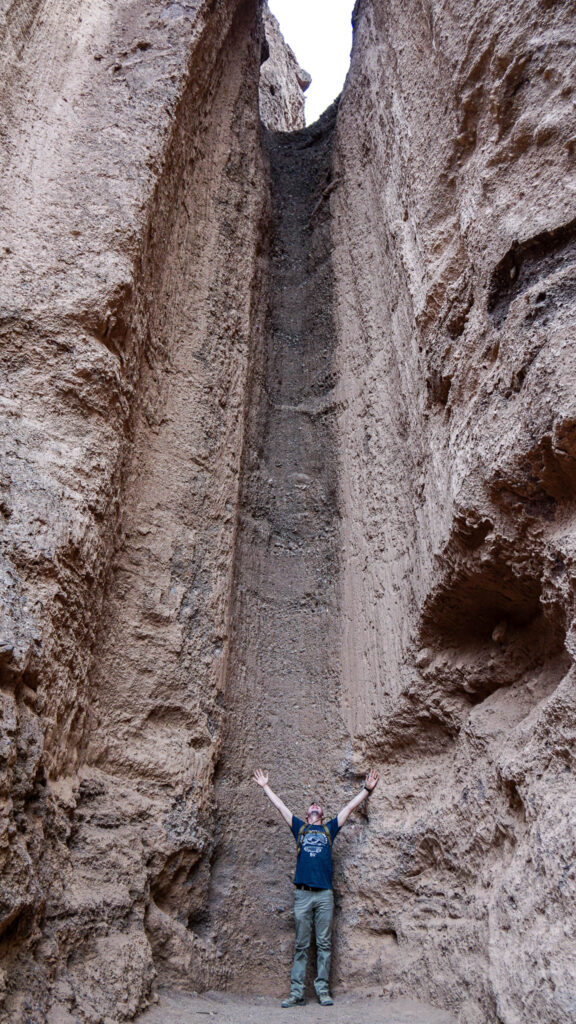
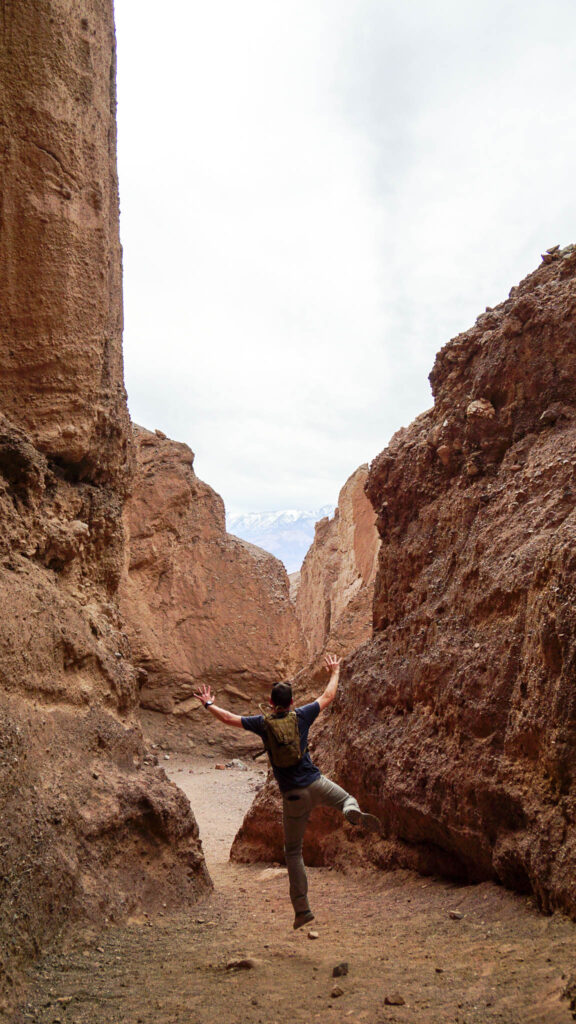
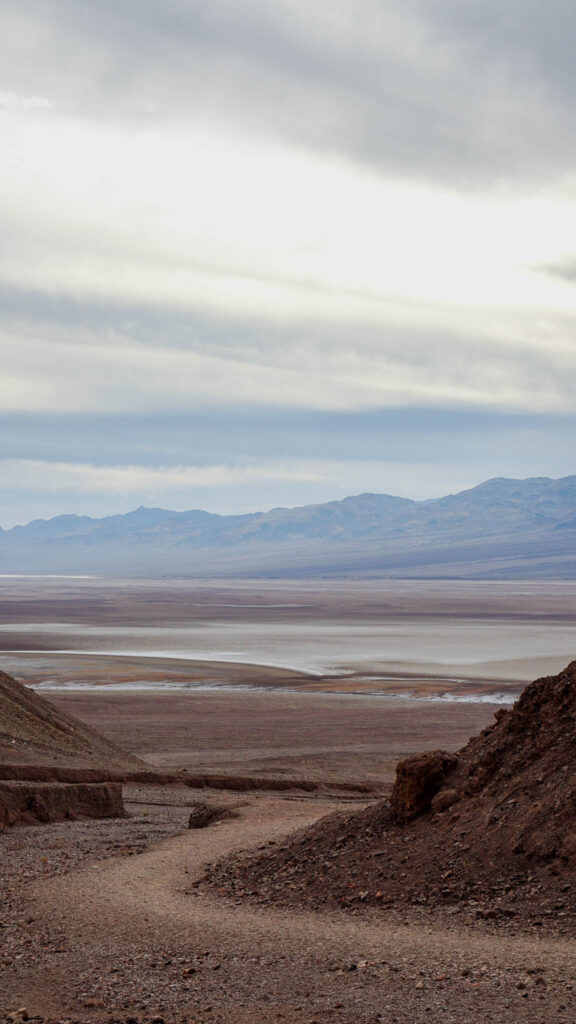
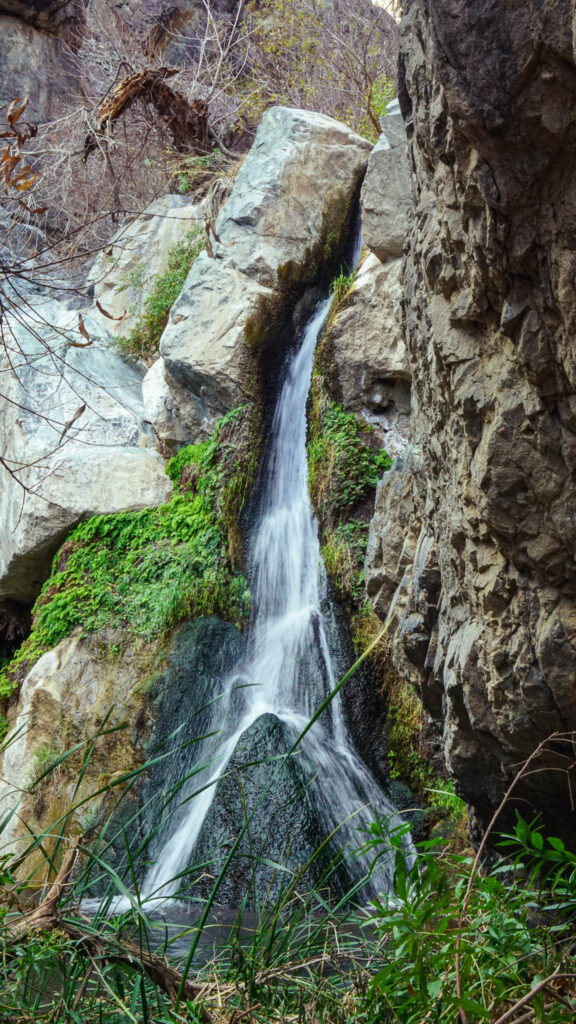
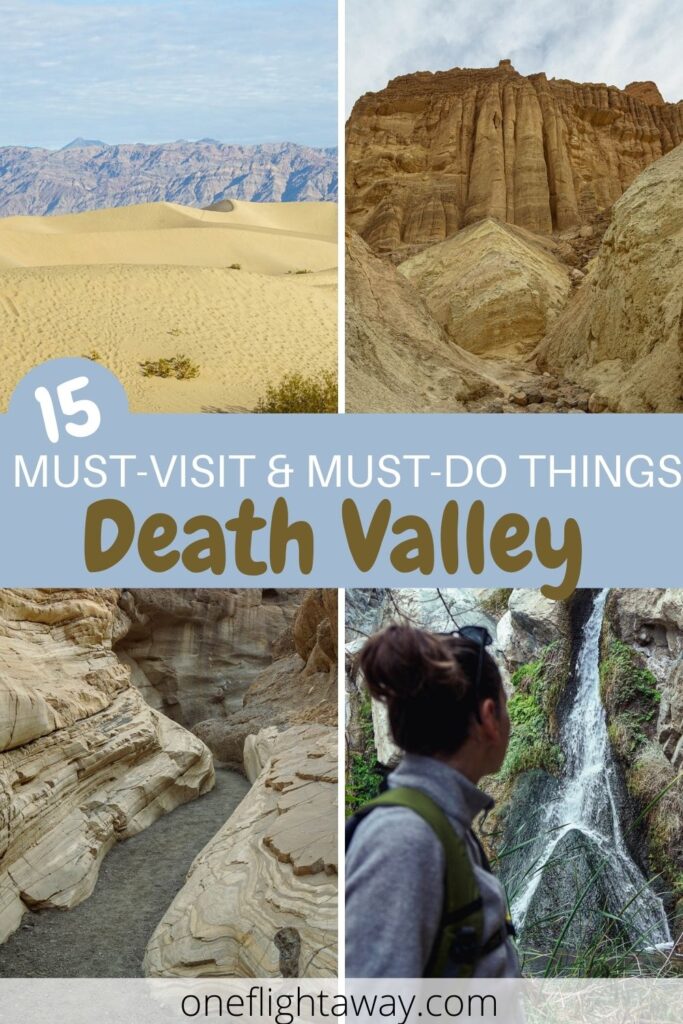
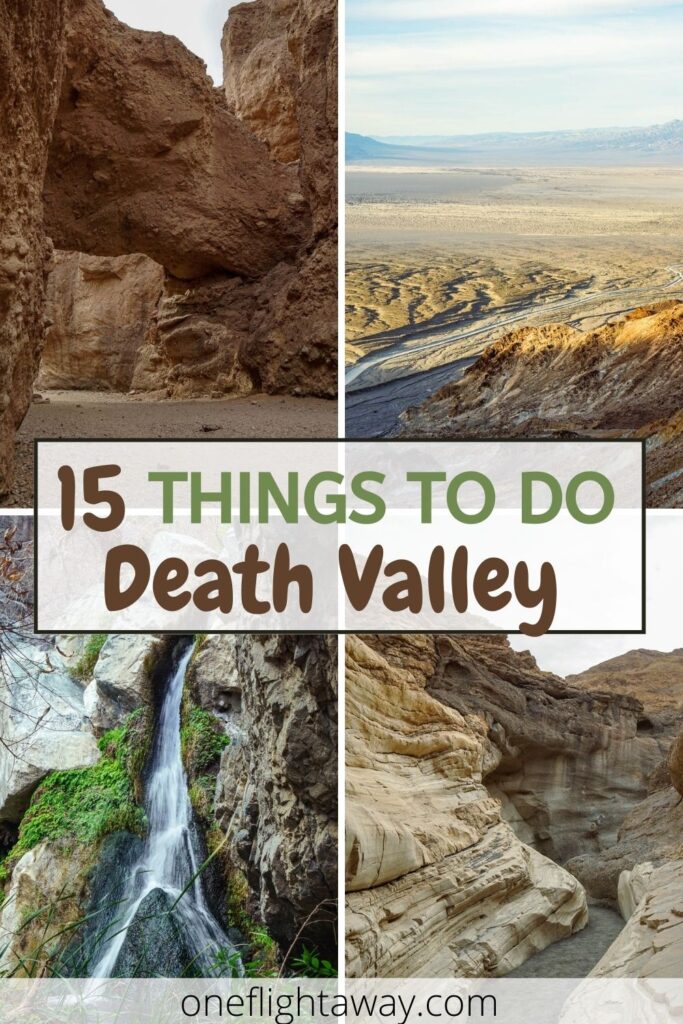
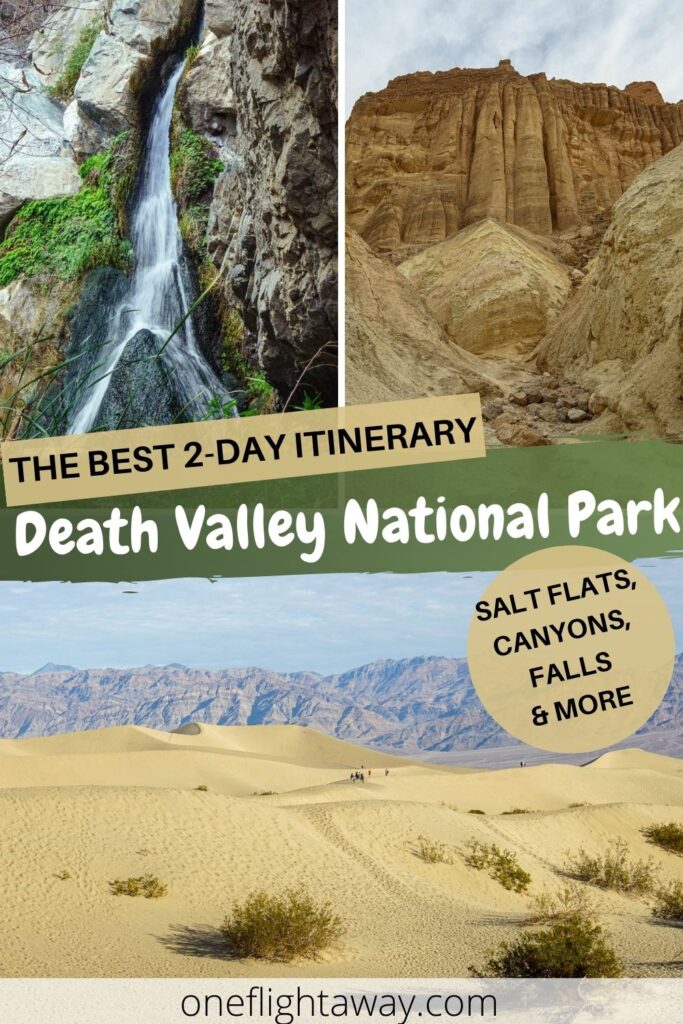


21 Comments
Linda (LD Holland)
You definitely have me convinced that we finally need to plan to visit Death Valley. I guess the name never really called to me. But I can see from your post that there is so many fascinating things to see. I can see why one visit may not be enough. And that the Artist Drive will only be a tease! Great to have a list of things you want to see for a return visit.
Liz
I agree with you that Death Valley hasn’t always been on my bucket list, but this post is making me think otherwise. The artisit drive sounds like a must-do!
Polly Dimitrova
Yes, absolutely worth the trip! For sure, it is an easy drive and you could actually visit the park in even just one day!
Walk Along With US
Death Valley is still on our list to visit and I can’t wait! We love hiking and the Mosaic Canyon Trail looks like one we can’t miss when we go. Thanks for sharing!
Polly Dimitrova
Yes, absolutely! I am happy you found something useful! 🙂
simplyjolayne
Like you, I haven’t given Death Valley much consideration. Maybe something about the name…
Your pictures tell a different story. Thanks!
Polly Dimitrova
I know – the name is not very inviting, but then as you start exploring there is just so much to see and explore.
Definitely worth the visit 🙂
Josy A
Wowza Polly! Death Valley is just so different to any area I have ever visited. The hikes all look fun but even just being in that wild scenery taking photos looks fab. Sunrise and sunsets must be simply incredible!
Polly Dimitrova
Yes, same here and can totally agree with you. Almost made me feel like I am on another planet a few times – the scenery was so different and kept changing throughout the park 🙂
Krista
Those sand dunes look incredible to visit! I had no idea there were so many unique things to see in this national park. Thanks for sharing!
Polly Dimitrova
Thank you, Krista. Yes, I was surprised as well 🙂
Farrah
I went here once when I was suuuper young so I don’t remember anything about it other than it being veryvery hot, so I’d love to go back now that I can actually appreciate it more! There are a lot of hikes I’d love to check out there (will definitely have to add the ones you mentioned onto my list)!
Polly Dimitrova
The best time to visit Death Valley is definitely in winter when it is not as hot! Glad you found some inspiration 🙂
Medha Verma
I would love to attempt some of these hikes when I visit Death Valley National Park but it seems like Mesquite Sand Dunes will be my favourite place to explore. Hopefully I’ll make it there someday!
Polly Dimitrova
Yes, it was so peaceful and beautiful especially early in the morning. 🙂
Lasma
I think I would focus on hikes! I love the views, so I think it would be worth it 😍 And what a great list, well done!
Polly Dimitrova
Glad you liked it. Death Valley does not have as many hikes, but the ones that I have mentioned are all worth it 🙂
Michelle
Death Valley is on my list of places I’d like to go hiking. Thanks for sharing so many great options!
Polly Dimitrova
Yes, it is definitely worth the visit 🙂
Erin
We loved Death Valley when we visited last year, even though it was in June and so hot! I would love to go back but maybe in the fall. It is such a unique and other-worldly place! Great picks for your post 🙂
Polly Dimitrova
Thank you, Erin! Yes, i cannot even imagine how hot it would be in June. We visited in January and the weather was great – a bit cloudy on one of the days but we still loved it!